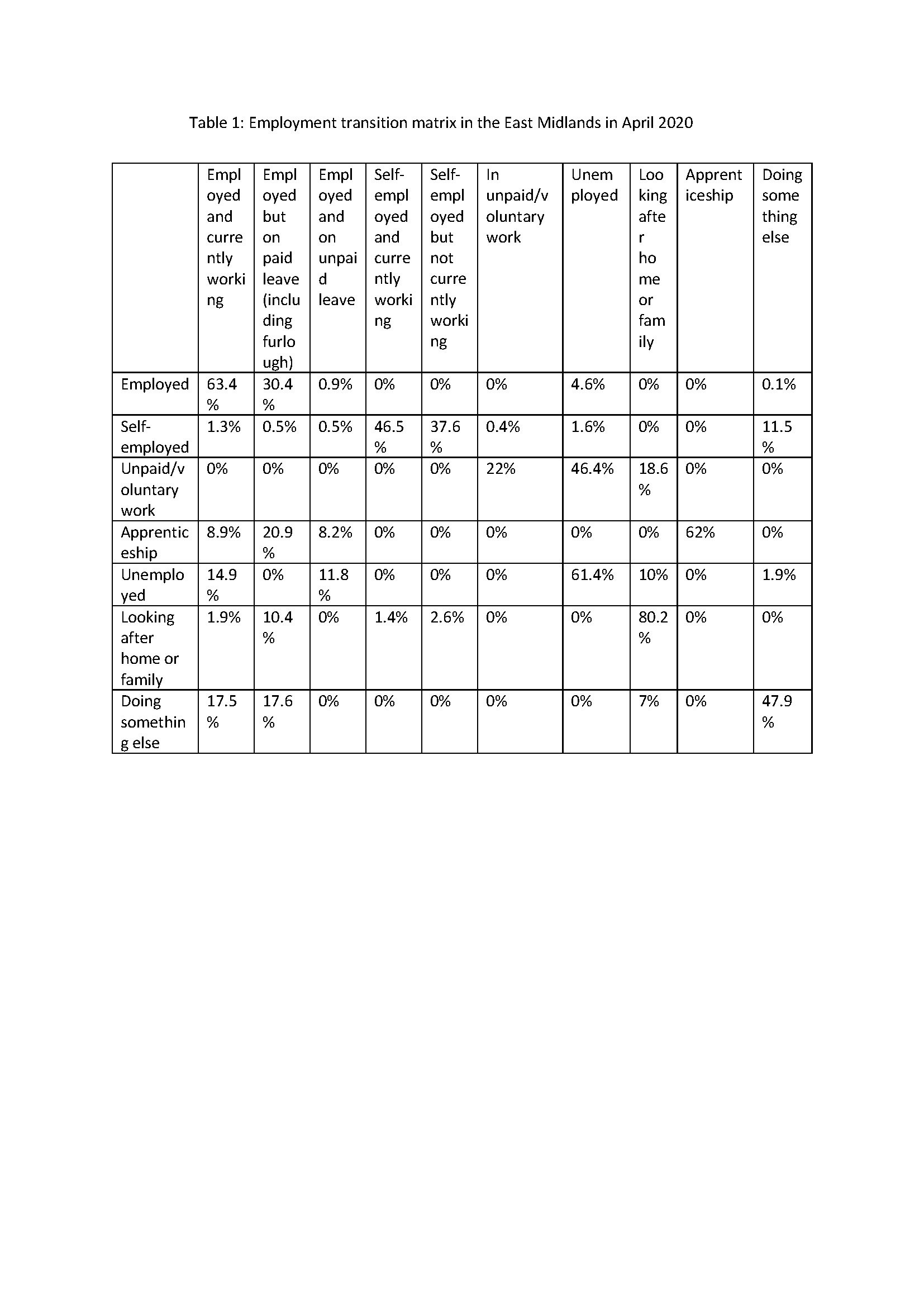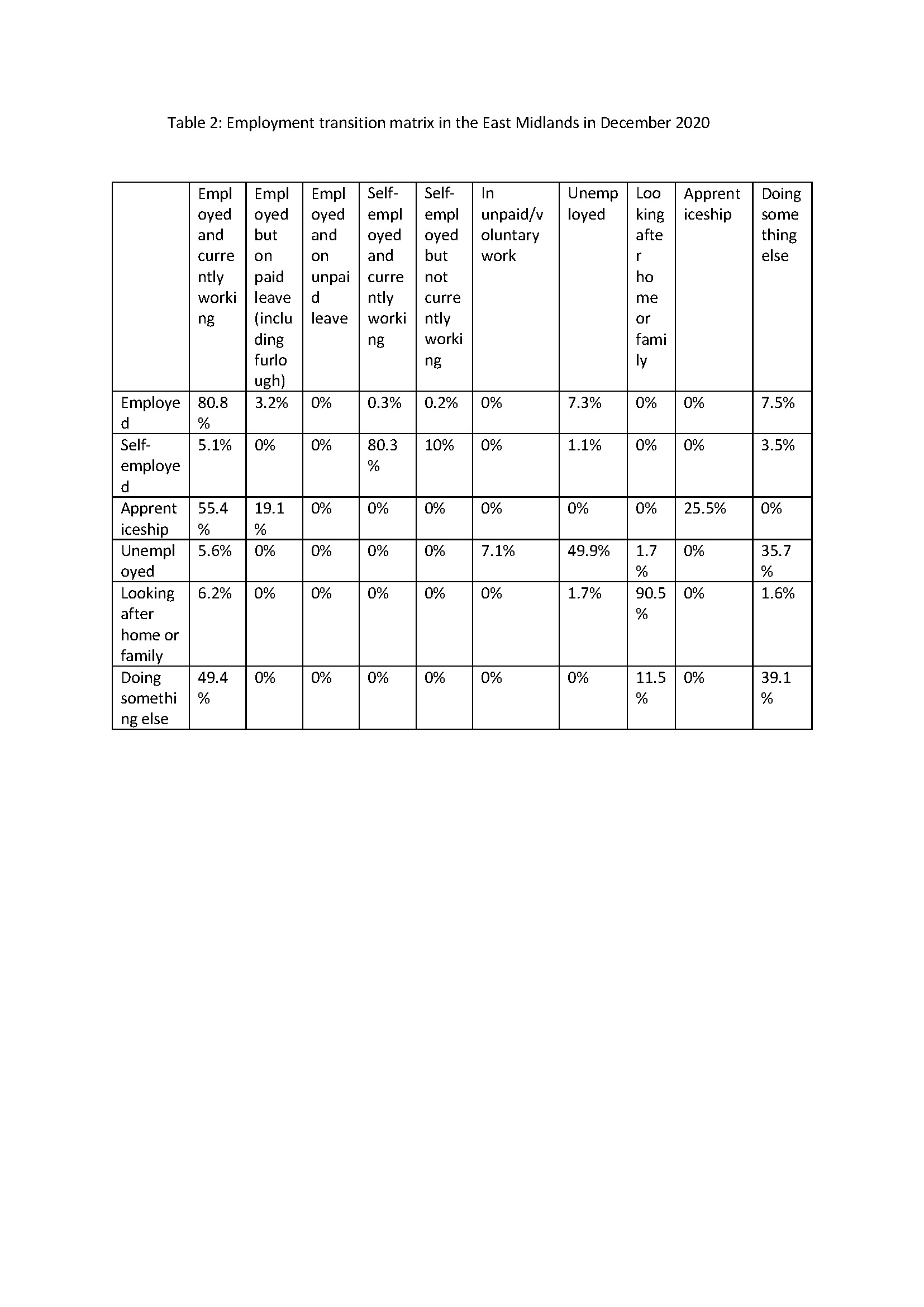- The COVID-19 surveys
In 2020, The Centre for Longitudinal Studies (CLS) and the MRC Unit for Lifelong Health and Ageing (LHA) have carried out two online surveys of the participants of five national longitudinal cohort studies. The five national cohorts were taken from the Millennium Cohort Study (born 2000-02), the Next Steps (born 1989-90), the British Cohort Study, the 1958 National Child Development, and the MRC National Survey of Health and Development. For the Millennium Cohort, the participants were both children and parents. The first survey took place in April 2020 which gave us a picture of how people lived just after the outbreak in March 2020. The second survey in December 2020 helped us to understand the effect of the lockdown easing in the previous summer until autumn.
Using the information from these surveys, we establish the transition matrices of employment status before and after COVID-19 for the East Midlands. Table 1 reports the matrix based on the responses in April 2020. Table 2 reports the matrix based on the responses in December 2020.
- How will the pandemic change the nature of employment?
The transition matrices in Tables 1 and 2 reveals several interesting facts regarding the impacts of the pandemic in the East Midlands. The first thing is the Coronavirus Job Retention Scheme (CJRS), which was designed to protect employment, had no significant impact on the job retention rate. Both in the April and December surveys, 93 percent of the people who were employed pre-COVID reported to be employed post-COVID. People responded strongly to the incentives created by the CJRS. In April 2020, only 63 percent of the people continued their jobs. Thirty percent kept their jobs but had to be on furloughed. Eight months later, we still had 93 percent of people who were employed pre-Covid reporting to keep their jobs. However, since the government-imposed changes on the CJRS that required for more contribution from the employers, less people were on furlough. Indeed, only 3 percent was on the furlough scheme, a drop of 90 percent compared to April 2020. Many people who had been furloughed either switched back to work or were on unpaid leave. The proportion of the people continuing to work rose to 80 percent as opposed to 63 percent in April. At the same time, 10 percent reported to be employed but on unpaid leave.
With the reduction of government contribution to the CJRS, more self-employed people became economically active. The number of people who became employed rose from 1.3 percent in April to 5.1 percent in December. At the same time, 80.3 percent of the self-employed restarted their business in December, as opposed to only 46.5 percent in April. The number of self-employed who were not working dropped from 37.6 percent to only 10 percent from April to December 2020.
We observe a significant number of people who came out of apprenticeship. In April 2020, around 39 percent of them became employed, although only 8.5 percent were working. Fast forward to December 2020, nearly three quarters of them were employed with more than half were actively working.
Similarly, a large portion of people who were not economically active joined the labour force. In April 2020, 36 percent of people who were not in the labour force nor having any commitment such as apprenticeship or family duties reported to be either employed or on furlough. This number went up to 49.4 percent in December 2020.
So to summarise, the two surveys pointed to the fact that in the East Midlands, people returned back to the working place after the easing of the restrictions, especially the people who were self-employed; in an apprenticeship programme or not economically active.



